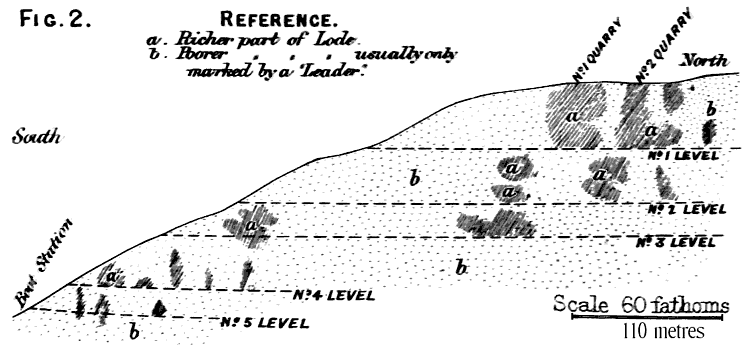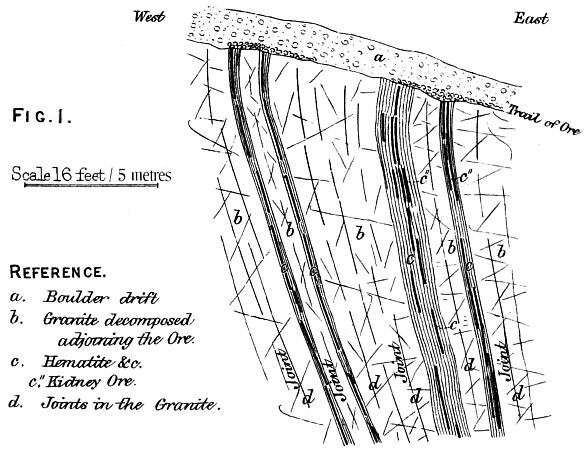

J.D. KENDALL ON ESKDALE'S IRON ORE
"The Iron Ores of Great Britain and Ireland", by J.D. Kendall F.G.S. (published by Crosby, Lockwood & Son, London, 1893) contains some interesting paragraphs on Eskdale's iron ore, slightly revised from a paper he wrote in 'The Haematite Deposits of West Cumberland' in Proceedings of the North of England Institute of Mining and Mechanical Engineers, vol. xxviii, 1879, pp. 10-12 and Plate xxii [from which the illustrations here have been taken- Fig. 3 from 1879 has been renumbered as Fig. 1, to match the 1893 text; other information from the 1879 paper is in square brackets]
p76: "Deposits in the Eskdale Granite and Ennerdale Syenite. These are somewhat numerous, but so far as proved not of any great importance commercially. The principal deposits hitherto worked are in the granite. One of these is near Boot, in Eskdale. Another, but much smaller, deposit was worked [ditto 1879] near the 'King of Prussia,' in the same valley. Several simlar veins have also been worked in a small way in the syenite of Ennerdale, notably at Crag Fell. They are all very much alike, both in form and inner nature, so that Nab Ghyll vein at Boot, which has been most worked, may be taken as typical. The form of the deposit is that of a vein. Its direction is nearly north and south, and it 'hades' to the east at angles varying from 65° to 80° with the horizon.


| No. 1. Dried at 212° Fahr. | No. 2. | |
| Ferric oxide | 27.43 | 92.57 |
| Manganous oxide | .03 | .02 |
| Silica | 2.15 | 2.05 |
| Alumina | 6.10 | .88 |
| Lime | 23.18 | .50 |
| Magnesia | 9.04 | .08 |
| Phosphoric acid | .04 | .03 |
| Sulphuric acid | .02 | .01 |
| Carbonic acid and water | 32.00 | 3.70 |
| 99.99 | 99.84 | |
| Metallic iron | 19.20 | 64.80 |